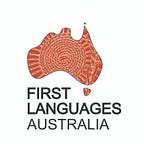There are four A’s in Ballaarat
By ABC Open Producer Larissa Romensky for ABC Mother Tongue, 7 Feb 2015
Did you know that there are four A’s in Ballaarat? Or that there was an emu-legged woman at Borombeet who lured young men to her camp before doing them in?
These are just some of the deadly, untold local tales which give a totally new slant to the region which includes Ballarat and Geelong and west of Port Phillip Bay in Victoria.
This is Wadawurrung history, their own stories told in their own language in a series of nine short videos made as part of ABC Open’s Mother Tongue project.
Wadawurrung country stretches from the mountains to the sea, from creeks to the coast and includes hills and grassy plains. The Wadawurrung people have been in the region for over 40,000 years and in many places you walk, stone tools that were once used thousands of years ago can be found.
ABC Open launched Mother Tongue to invite Aboriginal and Torres Strait Islander people to share their knowledge of traditional language names and stories with others, locally and around the country.
ABC Open producer Larissa Romensky teamed up with Wadawurrung in Ballarat to create these stories. At the helm was Bryon Powell, an Elder involved in native title and cultural heritage issues for many years. He also works as a projects officer at Wadawurrung in Ballarat. Bryon told the stories and appeared in the videos.
The producer was Tammy Gilson, a field officer at Wadawurrung, who not only helped coordinate the project but edited the videos and assisted with camera work. She is also the proud mother of both nine year old Indigo and six year old Rhyder who both appear in the stories. Twenty-three-year-old Stephanie Skinner, Bryon Powell’s niece provided the animation. It was a family affair.
Each story takes place in a significant part of Wadawurrung country. As we take a tour of the country we also correct the language spelling of places and explain the meaning behind the stories.
Language needs a place to live, and this is our chance for us to tell our stories and our language.
Bryon Powell
The journey begins in Kareet Bareet, now known as Black Hill near Gordon, not far from Ballaarat. It is where Bunjil, the spirit creator, created Wadawurrung men and women and it’s a place that was once covered in forest.
Ballaarat was once a large, grassy plain. We learn the meaning behind the name, which is now spelt Ballarat with one less ‘A’.
The impressive granite landscape of Wurdi Youang, now known as the You Yangs, was part of an ancient song line and tells the story of how this place was created.
Kuarka-dorla is set on the crashing coast of a place now known as Anglesea on Victoria’s Great Ocean Road. It is the site of a number of Aboriginal middens housing the remnants of shellfish that the old people once feasted on.
In the lakeside place of Borombeet, we hear the story of a woman with the legs of an emu who would entice young men to her camp before doing them in.
Warrenyeep, now known as Mt Warrenheep, was once covered in ferns and was an important lookout place as Ballaarat and surrounding areas could be seen from afar.
Modewarre was once a place of great activity and an abundant source of food for the Wadawurrung people. We visit this place now called Lake Modewarre and sit on the edge of a dry bank.
We reach great heights at Bongerimennin, now known as Flagstaff Hill lookout in Linton. As we look out across the land, we are reminded of the story of two great warriors who created the landscape.
The valley of waterfalls and creeks is in a place called Lal Lal and it is particularly significant as it is Bunjil’s final resting place. We hear the sounds he once heard.
You may never see these places in quite the same way again.
